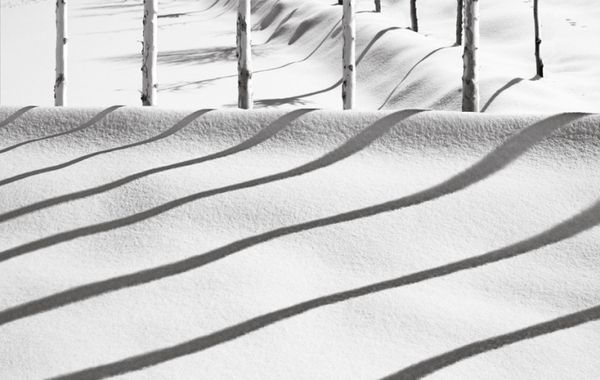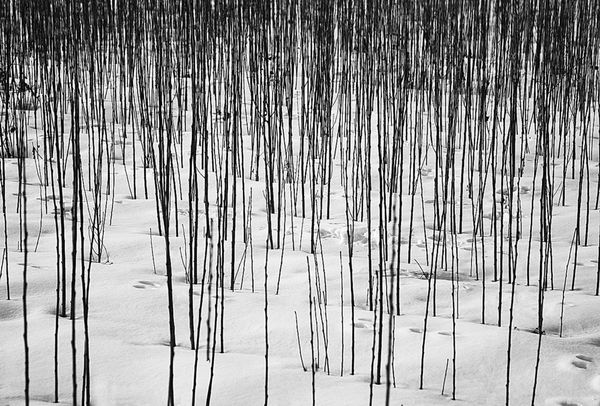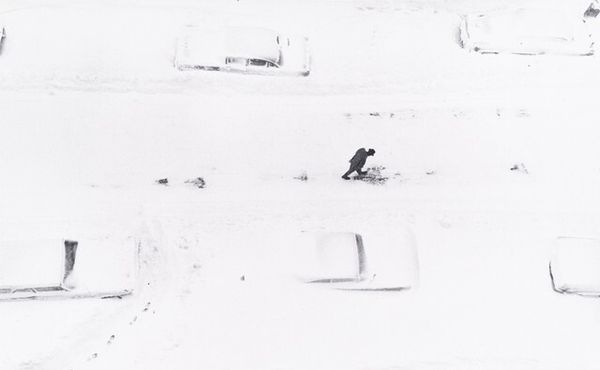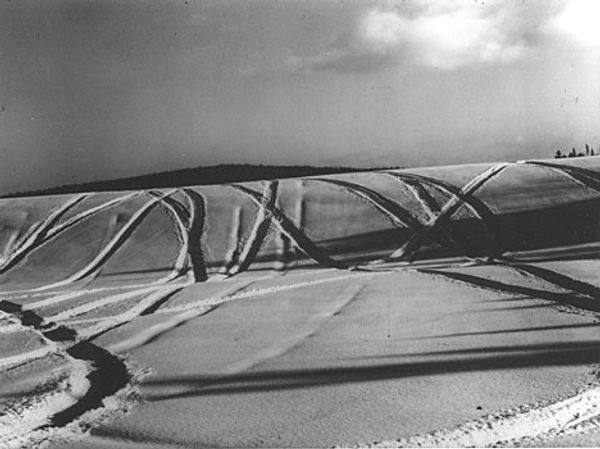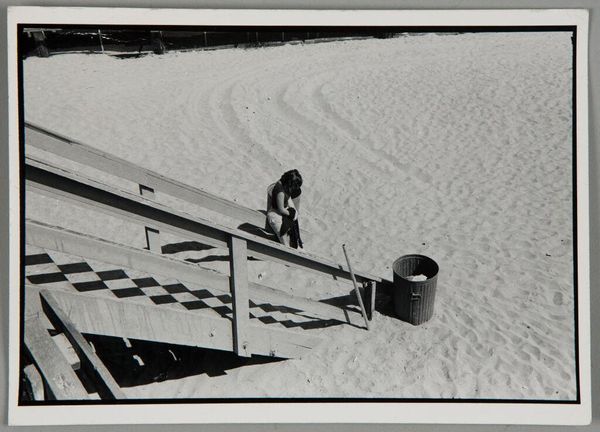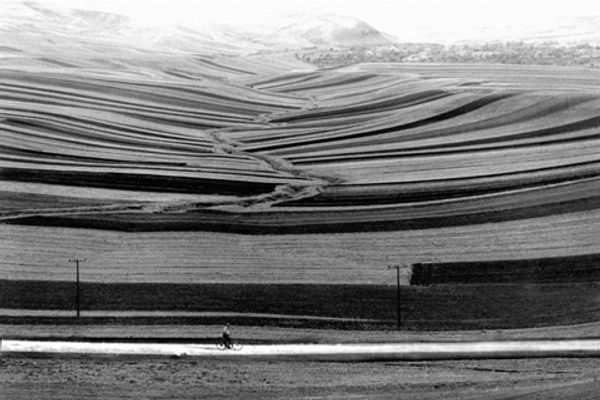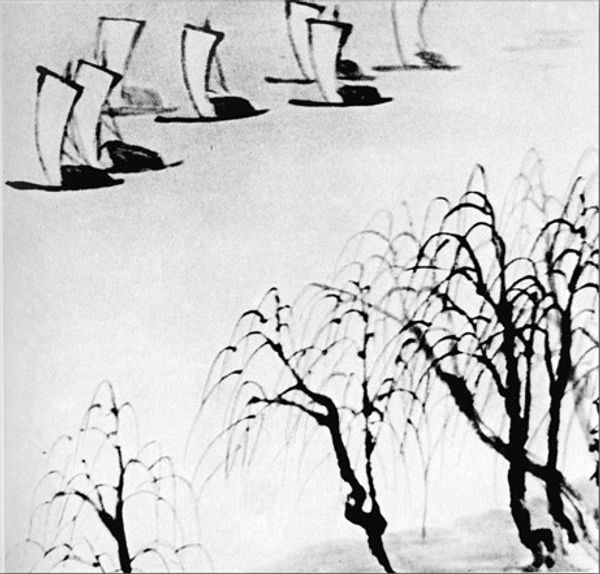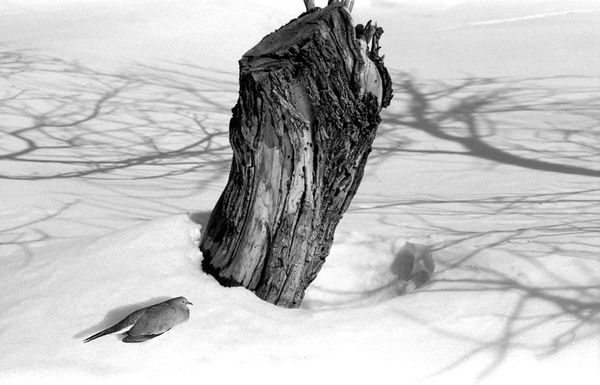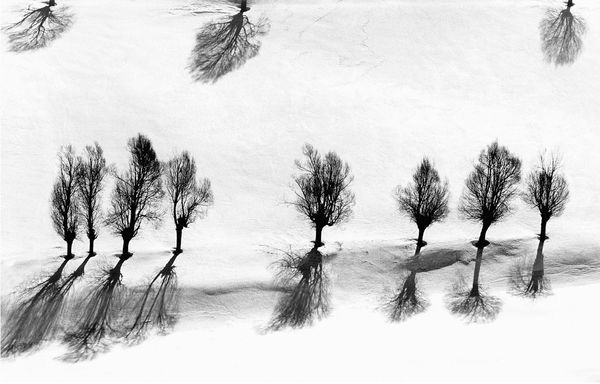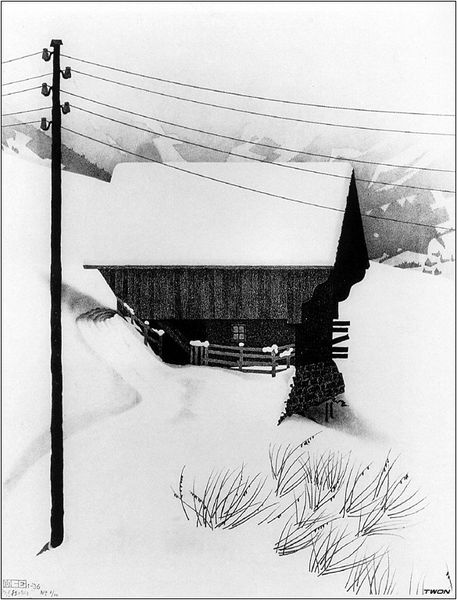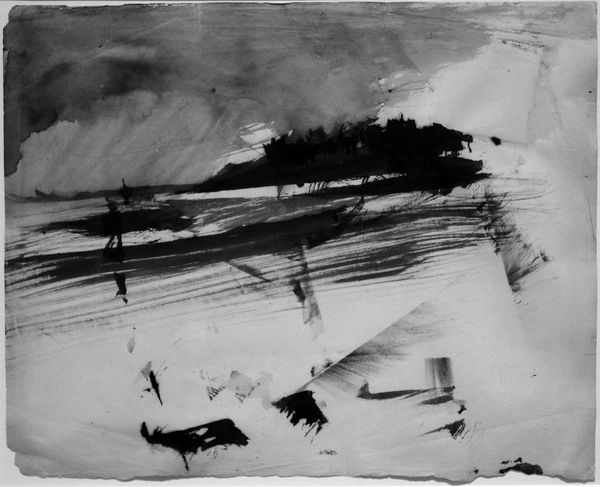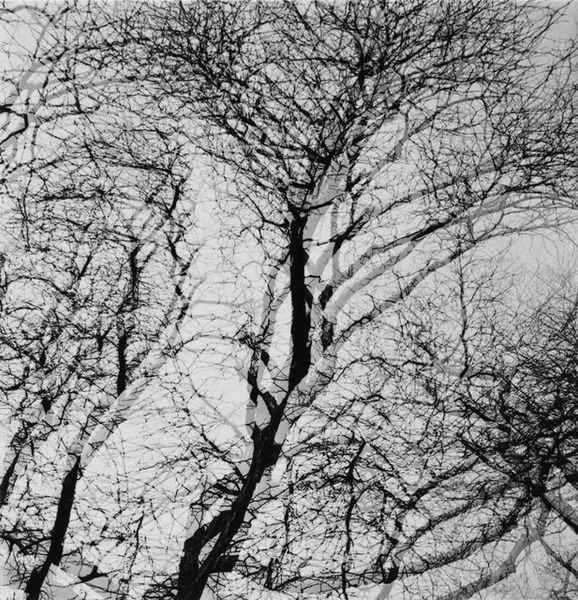
ephemeral-art, photography, sculpture, site-specific, installation-art
#
abstract-expressionism
#
conceptual-art
#
sculpture
#
landscape
#
land-art
#
ephemeral-art
#
photography
#
geometric
#
sculpture
#
site-specific
#
installation-art
#
line
#
monochrome
Copyright: Dennis Oppenheim,Fair Use
Editor: Here we have Dennis Oppenheim’s "Annual Rings" from 1968. It's a land art piece, a photograph of a series of concentric rings carved into the snow crossing the US-Canada border. It strikes me as both stark and strangely peaceful. What do you see in this work? Curator: I see a potent commentary on imposed boundaries and the arbitrary nature of borders. Oppenheim’s act of marking this international line, one typically represented through symbolic walls and checkpoints, with something as ephemeral and delicate as snow is powerful. Editor: Ephemeral, yes! Knowing it's snow emphasizes that sense of fleetingness. How does the concept of "land art" factor in? Curator: Land art, particularly of this era, often aimed to disrupt traditional gallery spaces and question our relationship with the environment and with authority. The choice of a border underscores issues of geopolitical power, human migration, and even climate, especially as these rings are destined to melt, signifying transience and the lack of fixity within artificial constructs of state. How does its monochrome imagery contribute, do you think? Editor: It amplifies that sense of starkness. Without color, the rings seem even more graphic, almost like a map or diagram imposed onto the landscape. It focuses the viewer on the idea of the border itself, stripped of any romanticism. Curator: Exactly. Oppenheim asks us to consider: who draws these lines? Who benefits? And what are the ecological and human consequences when nature exceeds these conceptual demarcations? Considering today's discourse around climate refugees and border control, the work seems as resonant as ever, right? Editor: Absolutely. It's less about the beauty of the landscape, and more about prompting critical thought about its divisions and fragility. Curator: Precisely. Oppenheim's gesture reveals that landscape itself becomes a canvas for challenging power structures, pushing us to rethink those relationships. I'll remember to approach other land art projects with a critical lens.
Comments
No comments
Be the first to comment and join the conversation on the ultimate creative platform.
